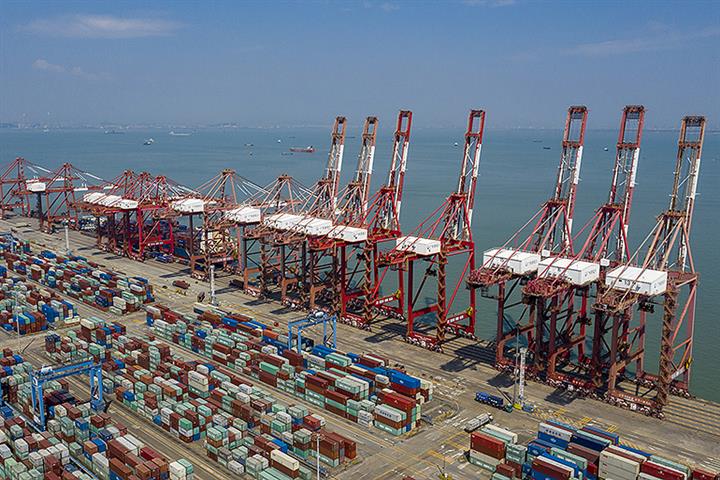 Guangdong's Foreign Trade Growth Slowed in First Quarter Due to Pandemic, Weak Demand
Guangdong's Foreign Trade Growth Slowed in First Quarter Due to Pandemic, Weak Demand(Yicai Global) April 28 -- China's manufacturing and foreign trade powerhouse, Guangdong province, recorded slowing growth in foreign trade in the first quarter due to sluggish demand and local Covid-19 outbreaks.
Imports and exports rose 0.6 percent to CNY1.84 trillion (USD280.5 billion) in the three months ended March 31 from a year ago, according to data revealed by the southern province's arm of customs administration.
The region was importing less. Exports climbed 2.2 percent to CNY1.14 trillion while imports dropped 2 percent to CNY691.9 billion (USD105.5 billion).
Guangdong's capital city Guangzhou boosted foreign trade by 1.1 percent and Foshan, a hub of garment, furniture, and electrical appliance manufacturing, increased its number by 4.7 percent. However, other factory clusters lowered their volumes. Foreign trade in Dongguan, home to phonemakers Oppo Mobile Telecommunications and Vivo Communication Technology, and Shenzhen decreased by 0.6 percent and 2.8 percent, respectively.
Southern China was containing the spread of the pandemic in the first quarter. Waves of Covid-19 outbreaks in Shenzhen and Dongguan, as well as those nearby in the Hong Kong Special Administrative Region, significantly hindered supply and logistics chains in the entire Guangdong province, Xiao Kuixi, deputy dean at the School of International Trade and Economics in Guangdong University of Foreign Studies, said to Yicai Global.
Hong Kong is a key point particularly in goods transport while the pandemic got worse in the region in February. Meanwhile, Guangdong province-based firms have been complaining about raw material and component shortages and expanded delivery times to as many as eight days from the earlier one day.
But part of the reason is external. Domestic suppliers’ rising material costs resulted in product price hikes, but overseas consumption showed weakness because of high inflation so shipments naturally decreased, said Ding, a chief of a Dongguan-headquartered electronics plant.
Overseas demand is under pressure, which will eventually impact China’s exports, as major economies are dealing with inflation while their adjustment cycles are extended due to the Russia-Ukraine conflict and US monetary policy, said Hong Peilin, head of the Shenzhen Electronic Commerce Service Center.
Narrowing imports signal declining exports. Foreign trade involving importing raw materials and intermediates to process locally and to turn into value-added goods slumped in Guangdong to less than 30 percent of the province's total in 2020, which is bad for economic development, said Chen Wanling, research center director at Guangdong University of Foreign Studies.
Importers of raw materials should look within. Companies that are involved with processing trade should upgrade to high-quality, green, and sustainable business models and sell their finished goods in China instead of exporting, Chen added.
Moreover, the shrinking demand is partly explained by competition. The production capacity of emerging markets in Southeast Asia is gradually recovering and Guangdong's overseas orders are ebbing, said Wang Zhen, deputy director at a regional development department of Shenzhen-based think tank China Development Institute. Meanwhile, central and western regions of China are gaining some of the southern province's orders with their freight train transport advantage.
Editors: Zhang Yushuo, Emmi Laine, Xiao Yi